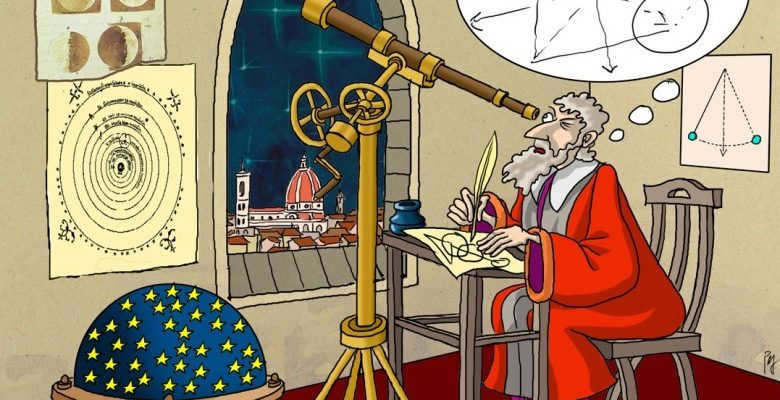
Astronomy is an ancient field of study that focuses on the movement and characteristics of celestial bodies. Throughout history, civilizations such as ancient Greece, Rome, Babylon, and Egypt have been fascinated by the stars and their movements in the sky. Interestingly, not everyone is familiar with the origins of this scientific discipline. In ancient times, astronomers from these civilizations made careful observations and recorded their findings. As time went on, astrology began to emerge in the Middle Ages, which eventually led to the separation of astrology and astronomy in the eighteenth century.
What is the field of astronomy?
The exact origin of astronomy remains unknown, as numerous scientists have contributed to its development over time. However, it is now recognized as the study of the universe, encompassing the examination of celestial bodies’ location, structure, movement, and evolution.
Astronomy encompasses the study of the Sun, other stars, planets within our solar system, asteroids, comets, and meteoroids. This scientific field also investigates exoplanets, satellites, interplanetary matter, and various other phenomena. The term “astronomy” itself is derived from the ancient Greek words “aster”, meaning “star”, and “nomos”, which translates to “law”, “establishment”, or “custom”.
Astronomers do not have the ability to conduct experiments in the same way that physicists do. The vast majority of the data that astronomers collect about celestial objects is acquired through the use of electromagnetic radiation. The act of observing the universe is regarded as a highly intricate and arduous task, demanding a great deal of focus and concentration. As a result, it is not practical to discuss measurements of distance, such as meters or kilometers, in the field of astronomy. Instead, astronomers employ astronomical units for this purpose.
Contributions of Scientists in the Field of Astronomy
It is challenging to determine the exact individual who invented astronomy. However, it is widely acknowledged that numerous researchers made significant contributions to the development of this scientific field.
Thales of Miletus
Thales, an ancient Greek mathematician and philosopher, is often credited with the discovery of the Little Bear constellation, which served as a navigational guide for the Greeks. The Phoenicians had previously utilized this constellation.
Additionally, Thales is believed to have formulated the theory of the inclination of the ecliptic to the equator. He also delineated five circles on the celestial sphere, including the celestial equator, the tropics of summer and winter, and the Arctic and Antarctic circles.
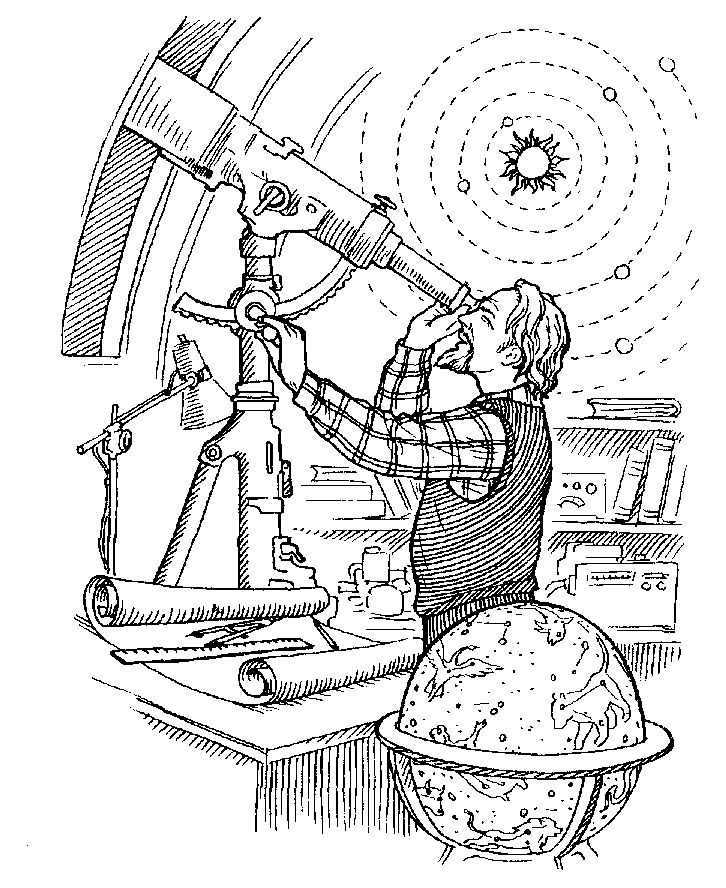
The ancient philosopher in Greece acquired the knowledge of determining the occurrences of equinoxes and solstices. He successfully discovered the irregularity in the time intervals between them. Thales was the pioneer in recognizing that the Moon emits reflected light. Furthermore, he made the significant finding that solar eclipses are connected to the movement of the Moon. Additionally, Thales was able to determine the angular size of both the Sun and the Moon.
This researcher is also credited with developing the mathematical approach for studying the celestial bodies’ motion. He devised a calendar based on the Egyptian model, comprising of 365 days divided into 12 months, each consisting of 30 days, with the exclusion of 5 days.
Cleostratus of Tenedos
Cleostratus of Tenedos made significant contributions to the field of astronomy as the first observational scientist. Historical records document Cleostratus’ meticulous observations of the sky from Mount Ida on the island of Crete, which continue to be studied and analyzed today. Additionally, Cleostratus is credited as the author of the renowned poem “Astrology”.
A fellow scholar and follower of Cleostratus, whose identity remains unknown, successfully calculated the duration of the tropical year. This measurement represents the period of time it takes for the Sun to complete one cycle of seasonal changes.
Eudoxus of Cnidus
This intellectual was the pioneer in responding to Plato’s appeal. He is known as the founder of the institution that served as the groundwork for theoretical astronomy. Eudoxus devised an intricate scheme for delineating the motion of celestial bodies, providing an explanation for their traversal across the heavens. He succeeded in elucidating the behavior of all objects with the exception of Mars. Moreover, this investigator was the inaugural individual in Europe to compile an inventory of stars.
The ancient Greeks believed that the celestial sky was composed of solid, transparent spheres. These spheres were arranged at various distances from the Earth’s surface, with the celestial bodies fixed upon them. Stars were situated on the outermost sphere, and thus carried out their daily revolution. Through his study of rotation speed, Eudoxus was even able to account for the loops observed in the movements of Mars, Saturn, and Jupiter in relation to the backdrop of stars.

Afterwards, Aristotle incorporated Eudoxus’ model into his own theory. Nonetheless, this did not contribute to its accuracy, as the “Eudoxus spheres” were not present in the natural world.
This well-known philosopher of ancient Greece was born on the island of Samos, situated in the Aegean Sea. The scholar was among the pioneers in utilizing geometric calculations to gauge the dimensions of the Moon and the Sun. Furthermore, he succeeded in discovering the correlation between their sizes and the paths along which these celestial bodies travel. Nevertheless, the scientist made numerous errors. According to his computations, the diameter of the Sun was six times greater than that of the Earth. Conversely, the Moon was three times smaller.
Aristarchus confidently asserted that the Sun occupies a central position within the planetary system. However, his peers openly mocked this notion, deeming it an affront to the gods. Furthermore, the astute scholar adeptly elucidated the phenomenon of day and night on Earth, attributing it to the Earth’s rotation on its axis. He aptly referred to the moon as a satellite of the Earth.
Eratosthenes
Eratosthenes, a renowned astronomer, philosopher, and geographer, made significant contributions to the field of mathematics. One of his notable inventions was a device that enabled the accurate determination of the locations of villages and towns. Additionally, Eratosthenes served as the head of the Alexandrian library, further showcasing his intellectual prowess.
One of Eratosthenes’ most notable achievements was his determination of the Earth’s circumference. Through his research, the astronomer observed that during the summer solstice, the Sun’s reflection in the wells of Aswan differed from the objects in Alexandria, which cast smaller shadows. Eratosthenes concluded that this phenomenon was a result of the Earth’s curved surface. By measuring the distance between the two settlements, the scientist was able to calculate the Earth’s radius.
Hipparchus of Nicaea
Hipparchus, an astronomer from Nicaea, is credited as the pioneer of scientific astronomy. He is widely recognized as the most renowned astronomer of ancient times. For numerous years, this diligent scholar meticulously observed the stars, meticulously comparing his findings with the records of Babylonian astronomers.
One of Hipparchus’ most significant contributions to the field is his creation of a highly precise star catalog, which encompassed over 1000 stars. Additionally, he was the first to introduce the concept of stellar magnitudes, categorizing them into six distinct groups based on their brightness levels, ranging from the most luminous to the least perceptible.

The scientist successfully conducted measurements with a high level of accuracy. He was able to determine that the length of the seasons varies slightly, and concluded that this is a result of the unique position of the Sun in the celestial sphere. Additionally, the researcher made revisions to the calendar, calculating the duration of a year to be 365.25 days.
Claudius Ptolemy
Claudius Ptolemy, a renowned scientist, made significant contributions to the advancement of ancient astronomy. His most notable work, “The Great Mathematical Construction,” served as a fundamental textbook for mathematicians and astronomers.
This influential piece encompassed all astronomical accomplishments from ancient times, as well as several discoveries made by Ptolemy himself, along with a comprehensive catalog of the celestial sphere. It meticulously detailed 48 constellations and 1022 stars.
Furthermore, Ptolemy meticulously documented various devices and calculation methods utilized during that era while developing a mathematical model of the universe. This model, commonly known as the “Ptolemy system,” gained widespread recognition and popularity.
It is worth mentioning that this particular work had minimal connection to natural phenomena. However, it provided the ability to accurately predict the movement of celestial objects, the timing of eclipses, and the simultaneous appearance of planets in the sky.
Nicolaus Copernicus
This Polish astronomer received his education from institutions in Bologna, Krakow, and Padua. During his time there, Copernicus acquired knowledge in various scientific fields, including astronomy. In 1512, he became a canon in Frombork, where he also conducted astronomical observations and explored the vastness of the universe.
Copernicus’s most significant contribution was his publication “On the rotation of the celestial spheres” in 1543. In this work, he presented the groundbreaking idea that the Earth is spherical in shape and proposed the heliocentric model, stating that the Earth and the other planets orbit the Sun. Despite being banned by the church, the work was eventually published shortly before the astronomer’s death.
One of Copernicus’s notable achievements was his ability to explain the retrograde motion of the planets. He outlined the principles for calculating the apparent positions of the planets, stars, and the Sun in his work. Additionally, he discussed the Moon, described the different planets, and provided explanations for their changing latitudes.
This Danish scientist, who lived and worked during the Renaissance, was a pioneer in the field of astronomy. He made groundbreaking and ongoing observations that were crucial for the development of our understanding of the laws of planetary motion. These observations served as the foundation for Kepler’s later work.
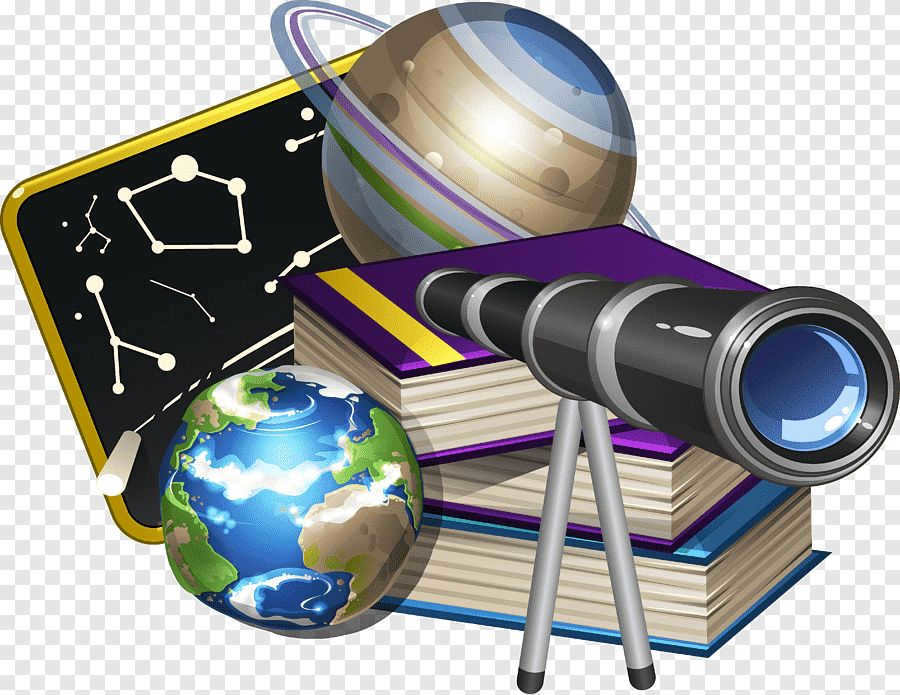

In November 1577, Brahe witnessed the appearance of a comet in the sky. He meticulously observed and analyzed the path of this celestial object until it vanished from sight in 1578. By comparing his findings with those of other scientists, Brahe arrived at a distinct conclusion that contradicted Aristotle’s belief. Comets are not a mere atmospheric occurrence, but rather extraterrestrial entities that exist at a distance three times farther than the Moon.
Brahe documented his extensive research in a treatise consisting of multiple volumes. The initial publication was the second volume, which primarily focused on the celestial system and also discussed the comet of 1577. The first part of the treatise was released later in 1592, and unfortunately, the work remained incomplete.
In 1602, Kepler published a complete edition of his work, which delved into the theory of planetary, comet, solar, and lunar motion. Unfortunately, Tycho Brahe, who had initially intended to describe these phenomena, was unable to fulfill his idea.
Johannes Kepler
This German mathematician revolutionized the study of the solar system by discovering the laws governing planetary motion. Kepler also developed an improved version of the telescope, which further enhanced our understanding of the cosmos.
By the end of the sixteenth century, astronomy was still grappling with competing geocentric and heliocentric models. However, Kepler’s laws of motion provided a comprehensive explanation for the irregular movements of the planets.
Kepler derived the laws that govern the motion of planets, stating that they all follow elliptical paths. The Sun is located at the focal point of these ellipses. The velocity of a planet in its orbit changes as its distance from the Sun varies. Kepler’s theory was based on his meticulous study of Mars’ orbit over a period of ten years.
Newton later employed Kepler’s laws of planetary motion in his groundbreaking work on the theory of gravity. Additionally, Kepler was the first to publish a comprehensive edition of Copernicus’ astronomical findings. However, this publication was promptly placed on the Index of Banned Books. In this work, Kepler documented his own remarkable astronomical discoveries.
In 1627, during the summer months, Kepler released a set of astronomical tables. These tables were the product of his diligent efforts over a span of 22 years. The demand for this work was high, as all previous tables had become outdated. Notably, Kepler’s tables were the first to include logarithmic calculations, making them particularly useful for various calculations. Sailors and astronomers relied on Kepler’s work for nearly half a century, up until the early 1800s.
He is a renowned astronomer, physicist, and mathematician who had a profound impact on the scientific community during that time period. He made significant discoveries in the regularity of pendulum movement, as well as the invention of a gas thermometer and hydraulic scales.
In 1609, Galileo constructed his own telescope equipped with a convex lens and a concave eyepiece. This particular design provided a magnification of approximately three times. He later developed a telescope that allowed for up to 32 times magnification.
Galileo is also credited with introducing the concept of a “telescope.” On January 7, 1610, he began observing celestial objects and was able to determine that the Moon exhibits a complex surface. He attributed the ashen color of the Moon to sunlight reflecting off the Earth.
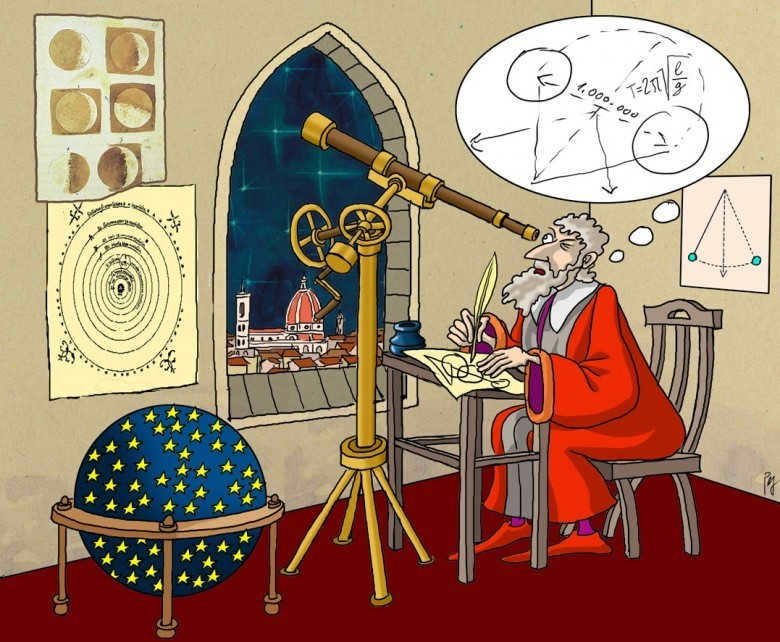
The scientist successfully debunked a significant counterargument to the heliocentric theory, which claimed that the Earth couldn’t revolve around the Sun since the Moon revolves around it. The researcher managed to demonstrate the presence of spots on the Sun and conducted a thorough study of the planets within our solar system. Through his observations, he was able to calculate the duration of the Sun’s rotation and ultimately concluded that these celestial bodies are situated at a considerable distance from Earth. Furthermore, Galileo put forth the idea that the universe is infinite. He also made a groundbreaking discovery that the Milky Way is not a mere cloud, but rather a collection of stars.
It should be noted that the scientist was a fervent supporter of the Copernican theory. As a result, a conflict arose with the church. Galileo was put on trial and, being in a precarious position, was forced to renounce his own theories. This occurred in 1632. Despite being under house arrest, the scientist persevered in his work with his disciples, even though his eyesight significantly deteriorated.
Edmund Halley
Edmund Halley, a renowned British scientist, made significant contributions to the fields of astronomy, physics, and mathematics. During his time as a student at Oxford in 1676, Halley published his first scientific work titled “On the Orbits of the Planets”. In this work, he successfully identified notable distinctions between the orbits of Saturn and Jupiter. Additionally, Halley compiled the “Catalogue of the Southern Sky”, a comprehensive collection of data on 341 stars situated in the Southern Hemisphere.
In 1693, the scientist discovered the secular acceleration of the Moon, suggesting that the celestial body was continuously getting closer to the Earth. In 1677, Halley devised a novel method for measuring the distance to the Sun, introducing the concept of an astronomical unit. This involved observing the movement of Venus across the Sun’s surface from two locations with different latitudes. Thanks to Halley’s technique, by the late 1800s, scientists managed to reduce the margin of error in calculating the solar parallax by a factor of 25.
In 1716, the scientist made detailed calculations, stating that this was a single comet, which should reappear at the end of 1758. The celestial object was successfully identified, and it indeed returned at the predicted time, providing the first empirical evidence for Newton’s theory and elevating the scientist’s reputation. Today, this celestial object is commonly known as Halley’s Comet.
Due to his remarkable achievements, the scientist was awarded the prestigious title of Master of Astronomy at Oxford and was granted membership to the Royal Society. In fact, Halley was the first to draw the attention of his fellow researchers to nebulae, which were then enigmatic entities. In a publication from 1715, he proposed that these objects were self-luminous cosmic entities.
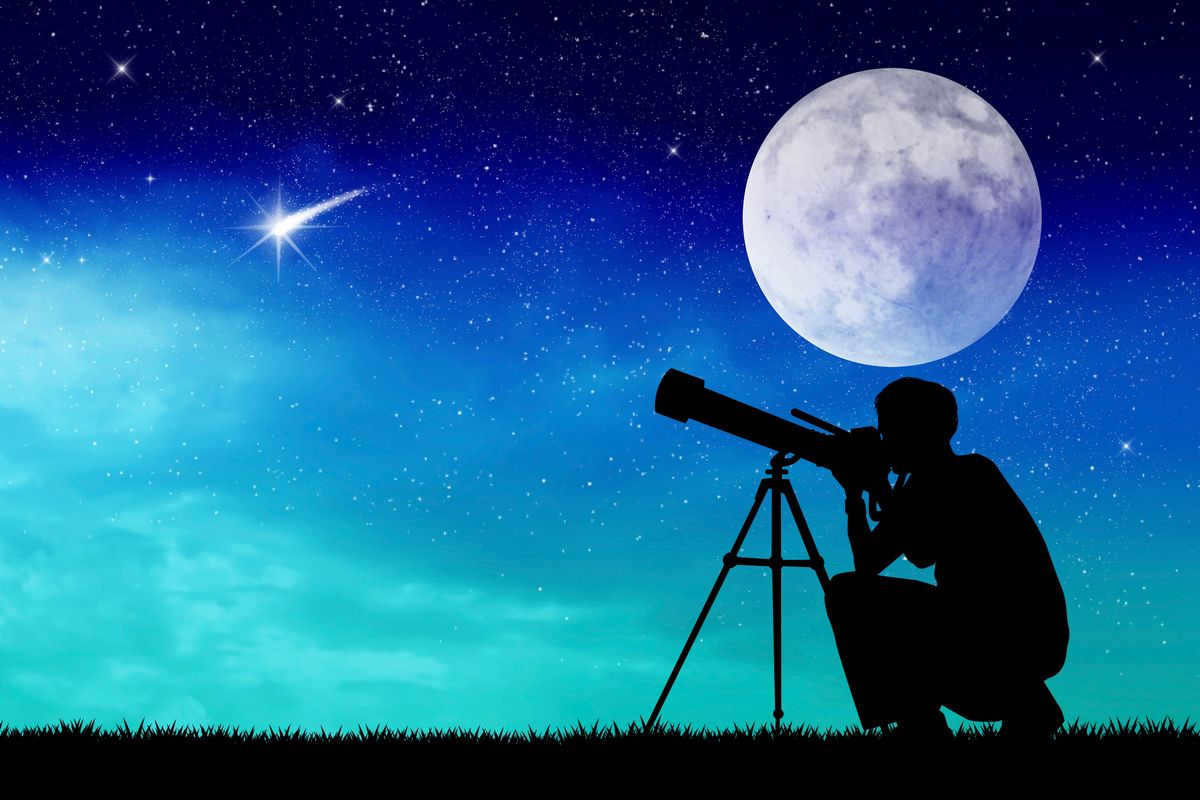
Mikhail Lomonosov
Mikhail Lomonosov is renowned as the first Russian scientist of immense importance. Within the realm of astronomy, Lomonosov gained recognition for his discovery of the presence of an atmosphere on Venus. This groundbreaking observation took place on May 26, 1761, during which the scientist observed Venus traversing the solar disk.
Furthermore, Lomonosov was responsible for the invention and construction of various innovative optical instruments. Additionally, he established a school dedicated to applied and scientific optics. Among his notable inventions is the catoptric-dioptric incendiary system and the nocturnal tube, a device designed for studying distant objects at sea during nighttime. Lomonosov possessed a deep understanding of Newton’s and Gregory’s models and proposed his own unique design.
In April 1762, Lomonosov created a prototype of a revolutionary device. The following month, on May 13, he unveiled this groundbreaking invention at a gathering of the Academic Assembly. However, it wasn’t until 1827 that this remarkable development became widely known. Interestingly, when a similar device was suggested by Herschel, it was ultimately named after him.
William Herschel
William Herschel, a renowned British scientist of German descent, made a significant contribution to the advancement of astronomy. He revolutionized the field with his innovative design of reflectors, which had an unprecedented mirror diameter of 1.2 meters. Moreover, Herschel demonstrated exceptional skill in utilizing these instruments.
Herschel achieved remarkable discoveries during his career. Notably, he was the first to identify Uranus and observe its peculiar satellites, which displayed an unusual rotation direction. Furthermore, Herschel made groundbreaking observations of Saturn, identifying multiple satellites and studying its seasonal variations. He also provided an explanation for the distinctive stripes and spots on Jupiter’s surface, attributing them to cloud formations. Additionally, Herschel accurately measured the orbital period of Saturn and offered a comprehensive description of its iconic rings.
The researcher made an intriguing observation that the entire solar system was moving towards the constellation Hercules. By examining the solar spectrum, the scientist was able to detect the presence of infrared rays and establish a link between the solar system and the processes occurring on Earth.
William Herschel made a remarkable discovery of over 2,500 previously unknown nebulae. He dedicated his research to understanding their composition and interactions. Herschel referred to certain nebulae with a spherical shape as planetary nebulae and believed them to be clusters of dispersed matter where stars and planetary systems formed. Interestingly, all the nebulae he identified were actually galaxies. Nevertheless, Herschel’s theory held some truth, as the process of star formation continues to this day.
Astronomy, one of the oldest branches of science, has been around for thousands of years. Many scientists have contributed to its development, resulting in the discovery of important patterns and laws.
Astronomy has existed since the beginning of human civilization, with a fascination for the movements of the Sun, Moon, and stars. Ancient civilizations observed the twinkling stars and formed constellations, associating them with mystical symbols and signs. During this time, astronomy was closely intertwined with astrology. Nomadic tribes relied on celestial bodies to navigate their journeys, while farmers used astronomical observations to predict the weather. These early civilizations worshipped the celestial bodies, believing them to be divine entities.
The progress of astronomy was a gradual process. Observation served as the primary approach to studying celestial objects, their characteristics, and their movement. The ancient civilizations of the Greeks, Chinese, Hindus, and Mayans organized the gathered information to make predictions about the timing of the setting and rising of prominent celestial bodies. During this same era, there arose a necessity for time calculation, leading to the creation of the earliest calendars, which provided insight into the cyclic changes of day and night.
It should be mentioned that the ancient Greek civilization achieved remarkable progress in the exploration of celestial bodies. For instance, the renowned philosopher Pythagoras deduced that our planet possesses a spherical form. Similarly, the ancient Greek astronomer Aristarchus of Samos proposed the revolutionary theory that the Earth orbits around the Sun. These notions were considered exceedingly audacious and unconventional during that era, as the prevailing belief among most ancient scholars was that the Earth constituted a flat disk encompassed by an impassable ocean from all directions.
However, it was during the Renaissance that astronomy truly emerged as a distinct scientific discipline, separate from astrology. This significant shift was made possible by a combination of factors, including the invention of the telescope, the growing importance of trade and exploration, and a gradual loosening of the church’s influence on scientific progress. The Renaissance era was characterized by a remarkable accumulation of knowledge about celestial bodies, as well as a series of groundbreaking astronomical discoveries. The birth of modern astronomy can be traced back to the 16th century, when Copernicus introduced his heliocentric model of the solar system. This marked a pivotal moment in human history, as it prompted a departure from various outdated theories about the structure of the universe, and instead embraced a path of scientific inquiry and exploration.
Thus, the field of astronomy has continuously advanced alongside human society. The constant stream of new discoveries and innovations has contributed to the expansion and deepening of our understanding of celestial objects and the underlying physical principles governing their characteristics and movements. However, it is important to recognize that astronomy is not solely a discipline rooted in the past, but also holds great promise for shaping the future of humanity. As of now, our exploration of the vast and enigmatic universe remains in its infancy, with only a fraction of its mysteries uncovered.
Option 2
Since ancient times, humanity has held a fascination with celestial phenomena. Through observing the stars, people discovered a correlation between their movements and changes in weather. This knowledge allowed them to organize their lives, provide recommendations for time planning, and predict future harvests. They meticulously collected information about the movements of celestial bodies and organized them into a scientific discipline known today as astronomy.
Astronomy is one of the oldest sciences, existing alongside humanity itself and evolving alongside it. In order to study celestial objects, people invented specialized instruments. The initial instrument used to observe the Sun was a gnomon, a stick placed in the ground. By measuring the length of the shadow it cast, people could determine the position of the midday sun.
Astronomy was a subject taught in medieval universities, and the discussion about the Earth’s position in the Universe – whether it orbits around the Sun or vice versa – became a significant emblem of the Renaissance era.
In an effort to accurately determine longitude and latitude, scientists sought to enhance the mechanics of timepieces. This led to the development of precise chronometers, which played a crucial role in the Industrial Revolution. Aspiring mechanical engineers started their journeys in watchmaking and repair workshops, where they gained inspiration for constructing automated machines.
The level of knowledge possessed by humanity was continually increasing, and a wealth of experience was being accumulated. In order to venture into unexplored territories and expand our horizons, new devices were necessary. The methods used for studying astronomy were quite costly, with the price of a single telescope sometimes surpassing the cost of an entire factory.
A multitude of scientists dedicated their lives to the field of astronomy, with one of the most renowned being Lomonosov. He conducted research on atmospheric electricity, polar auroras, and comet tails. Mikhail Vasilyevich also invented a telescope that greatly improved clarity of vision. He was the first to ascertain that Venus possessed an atmosphere similar to that of Earth. Furthermore, the scientist proposed that the universe is infinite and, much like our planet, undergoes infinite evolution over time.
Humanity is in a perpetual quest to uncover the enigmas of the world. As knowledge grows, so does the expanse of the unknown. This holds true for the realm of astronomy as well. Since ancient times, individuals have been delving into the mysteries of the celestial sphere. While numerous revelations have been made, there remains an abundance yet to be discovered.
In Brief, Astronomy is the Oldest Field of Study
Astronomy is the scientific discipline dedicated to the examination of celestial bodies and phenomena, including planets, stars, galaxies, nebulae, and more. It stands as one of the most ancient areas of study, dating back to early civilizations.
Civilizations across the globe utilized astronomy to develop calendars, determine timekeeping, and navigate the oceans. By observing the motion of certain luminous objects in the sky, they identified patterns and began monitoring these movements.
Initially, people relied on their naked eyes to observe celestial entities. However, the advent of telescopes enabled them to delve deeper into the exploration of the cosmos.
During the 17th century, the field of astronomy underwent a significant transformation, becoming a more rigorous and scientific discipline. This shift was largely due to the groundbreaking work of Galileo Galilei, who revolutionized the field by utilizing telescopes to observe celestial bodies. Additionally, Isaac Newton’s development of the theory of gravity further advanced our understanding of the motion of planets around the sun.
Presently, astronomy remains an incredibly captivating and enigmatic scientific field, constantly presenting us with new discoveries and unraveling the mysteries of the universe. Ongoing scientific research in this area promises to unveil even more exciting findings in the future.

Current hot topics

- Grasshopper Grasshopper is a member of a large family of direct-winged insects known as Grasshopperidae. There are approximately 600 representatives of this family, and they can be found on all continents. There is no other insect quite like the grasshopper.
- Raspberry The raspberry is a perennial semi-shrub that grows in various parts of the world. In Russia, it grows in the European part, as well as in the mountainous uplands of Bashkiria, the Ural Mountains, and western Siberia.
- Prince Svyatoslav In 942, the Kiev prince Igor and his wife Olga welcomed a son, whom they named Svyatoslav. According to ancient chronicles, he was the only son of Prince Igor and was destined to be his sole heir.
- The Butterfly Admiral is a small butterfly that inhabits Eurasia and some islands in the Atlantic Ocean. It was previously listed in the Russian Red Data Book but has since been removed.
- The Ladybug, a member of the COCCINELLIDA family, is a well-known insect that children are familiar with. It typically measures between four and ten millimeters in size.
- Venus, the second furthest planet from the Sun in the Solar System, is named after the ancient Roman goddess of love and fertility. It is the third brightest object in the sky.
This is not a scientific work or a completed graduate qualification work. This is a finished outcome of processing, structuring, and formatting the gathered information. Its purpose is to serve as a source of material for independent preparation of academic work.
If you are struggling to comprehend the subject, reach out to me via WhatsApp to discuss your topic, finalize the details, and I will provide assistance!

If you are interested in gaining knowledge on the correct execution and composition of essays on various topics, I have provided comprehensive information on the webpage titled “Understanding the Essence of Essays and Mastering the Art of Crafting Them”.

Introduction
Astronomy is the oldest scientific discipline that studies the motion, structure, and development of celestial bodies and their systems. The knowledge acquired in this field is widely utilized for practical purposes. The term “astronomy” originates from the Greek words Astron, meaning luminary, and nomos, meaning law.
Astronomy emerged from the practical requirements of mankind and progressed alongside them. The foundations of astronomy were laid thousands of years ago in Babylon, Egypt, and China for time measurement and navigation. In modern times, astronomy continues to be invaluable for navigation, timekeeping, and various other practical applications.
Astronomy explores the physical properties of celestial bodies and their impact on our planet. For instance, the Moon and the Sun are responsible for creating tides on Earth. Diverse forms of solar radiation, which can vary in intensity, influence processes in the Earth’s atmosphere and the biological activity of organisms. Numerous phenomena occurring both on Earth and in space are interconnected and mutually dependent.
Astronomy investigates matter in the Universe in conditions and scales that cannot be replicated in physical laboratories. Consequently, it contributes to expanding our understanding of the physical realm and stimulates advancements in physics and mathematics. Furthermore, it utilizes their methodologies and findings. Astronomy is also linked to other scientific disciplines, such as chemistry and geology.
Through the study of comets and the occurrence of solar and lunar eclipses, astronomy has paved the way for debunking superstitions. It demonstrates the potential for a scientific explanation of the Earth’s formation and the creation of other celestial bodies.
Astronomy is a discipline that relies on observation. However, in recent years, advancements in technology have allowed for the exploration and landing on celestial bodies, providing astronomers with valuable experimental data. Previously unattainable objects of astronomical research are now within reach for direct study, albeit limited to the closest ones.
Ancient Perspectives on the Universe
The correct comprehension of celestial observations did not occur instantaneously. The greatest minds of humanity toiled diligently in their quest for truth. They had to combat ignorance, resistance to change, and deep-rooted prejudices that were perpetuated by the church, which promoted a religious worldview.
The priests, as custodians of religion, utilized science to reinforce their authority. The establishment of calendar dates linked to celestial events motivated priests to study these phenomena. The priests amassed a wealth of empirical data about celestial observations, but lacked a proper explanation for them.
Long ago, people believed that the Earth was stationary and flat, with a solid sky dome acting as a cover. They thought that celestial bodies were either messengers from the gods or beautiful decorations created by God for the sky.
The advancement of navigation required the ability to navigate using the celestial bodies. The planets, which are the brightest of these bodies, move in loops across the sky. In attempting to explain the planets’ motion, they started with the concepts of the Earth being immobile and the sky being round. Aristotle, a philosopher and scientist from the 4th century BC, believed that each planet is held up by a crystalline sphere. These spheres are nested inside one another and revolve around the spherical Earth. The stars are fixed on the outermost sphere.
Subsequently, during the 2nd century CE, Ptolemy, an esteemed scientist from ancient Greece, provided an explanation for the intricate motion of the planets. According to his theory, each planet moves in a uniform circular path, while its center simultaneously rotates uniformly around the stationary Earth. Ptolemy carefully selected ratios of circle radii and planet circulation periods, allowing for accurate predictions of planet positions in the sky. This knowledge was crucial for navigation practices. The geocentric model, with Earth at its core, was the prevailing system of the universe during this time. (The term “geocentric” originates from the Greek word “ge,” meaning Earth.)
Copernicus’ Revolutionary Discovery
The 15th and 16th centuries marked a period of significant geographical exploration and the subsequent expansion of trade, leading to the rise of the bourgeoisie class and their ongoing struggle against feudalism. The advancement of trade necessitated improvements in navigation and astronomy. However, calculations based on Ptolemy’s theory, particularly regarding the positions of planets in the sky, were no longer accurate enough. Moreover, these calculations became increasingly complex as observations became more precise.
Ptolemy’s understanding of the universe aligned with the biblical concept of a fixed earth at its center. To question Ptolemy’s theory was to challenge the authority of the church and potentially spark a scientific revolution.
The brilliant Polish scientist Nicolaus Copernicus (1473-1543) made a groundbreaking decision. After careful consideration of Ptolemy’s geocentric model of the world, Copernicus reached the conclusion that it was fundamentally flawed. Instead, he proposed a revolutionary heliocentric model with the Sun at its center (Helios is the Greek name for the Sun). Therefore, Copernicus did not assert that the Earth was the center of the universe, but rather one of the planets orbiting around the Sun. This was a momentous shift in thinking that had a profound impact on the future development of science.
Giordano Bruno
The concepts formulated by Copernicus were embraced by Giordano Bruno, an Italian writer and philosopher (1548-1600). Bruno took Copernicus’ ideas a step further with his audacious thinking. He proposed that the stars were also suns, similar to our own but situated at great distances from us. He advocated for the notion that the universe is boundless and that the number of stars and planets within it is infinite, suggesting the presence of life on numerous planets. These ideas directly challenged the teachings of the Church and undermined their credibility.
Due to his unwavering commitment to his scientific beliefs, Bruno was sentenced to be burned alive at the stake by the Inquisition. This brutal punishment was the Church’s response to a brilliant thinker who drew logical and philosophical conclusions from Copernicus’ theory.
Galileo Galilei
The remarkable Italian scientist Galileo Galilei achieved numerous breakthroughs in the field of astronomy. In the year 1609, he constructed a compact telescope (having been aware of its invention in 1608 in Holland) and utilized it to observe celestial entities. By directing his telescope towards the heavens, Galileo provided confirmation for Copernicus’ theory through his discoveries.
Consequently, Galileo made the discovery of Venus’ phases. He deduced that such changes were only possible if Venus orbited the Sun and not the Earth. On the Moon, Galileo identified mountains and measured their elevations. It was revealed that there existed no fundamental disparity between the Earth and the sky – the “receptacle of the deity”. Mountains akin to those on Earth were indeed present on this celestial entity. This realization made it easier to comprehend that the Earth was merely one of these luminous bodies.
Galileo made a groundbreaking discovery when he found four satellites orbiting the planet Jupiter. This discovery challenged the prevailing belief that the Earth was the only center of rotation. Additionally, Galileo observed spots on the Sun and determined that it rotates on its axis. These spots on the Sun, previously seen as a symbol of “celestial purity,” also contradicted the idea that there was a fundamental difference between the Earth and the sky. Through his telescope, Galileo saw the Milky Way break apart into numerous faint stars. His promotion of the Copernican doctrine in Italian, which reached a wide audience, provoked the anger of the church.
Galileo aroused the anger of church officials by propagating the Copernican doctrine in Italian, a language accessible to a wide audience. This was a departure from the tradition of scientists writing their works in Latin. Initially, Copernicus’ teachings were denounced as false and heretical, and the dissemination of his ideas was prohibited. Despite this ban, Galileo defied the authorities and was subsequently summoned to stand trial. In 1633, under the threat of torture, the elderly scientist was compelled to publicly renounce his views and “repent” for spreading the teachings of Copernicus.
However, even after his forced recantation, Galileo remained under house arrest and was forbidden from publishing books on astronomy by the church officials.
Astrology
Astrology is the most ancient field of knowledge that has managed to survive until today. According to esoteric doctrine, when it comes to the question of which came first, astronomy or astrology, the latter undoubtedly takes precedence. It is through astrology that the study of the heavens and the cosmos began long before astronomical knowledge as we know it today (i.e. openly accessible and available to all). The origins of astrology are as enigmatic as the disappearance of Atlantis. Astrology arrived on Earth in the form of secretive knowledge possessed by priests, concerning the world, planetary influences, and the cycles that govern the universe.
Our ancestors had a completely different perspective on the world compared to us. They believed that every phenomenon and process was connected to the greater whole. They understood that what happened in one aspect of life, such as the human body, was similar to what happened in other aspects, like the celestial bodies or even the state of society. Unfortunately, our modern consciousness is structured differently. We have been shaped by the idea of progress and scientific thinking, which tends to separate things into distinct categories. While we have many scientific disciplines that study the world from various angles, we struggle to see the world as a cohesive entity. Astrology, however, offers us a way to perceive the world as a unified whole.
From a scientific perspective, astrology is considered to be a form of pseudoscience and a type of divinatory magic. However, it is acknowledged that astrology played a role in stimulating the advancement of observational astronomy, mathematics, meteorology, and other areas of knowledge during a certain stage of scientific development. While astrology may not have been classified as a pseudoscience 300 years ago, as humanity gained a deeper understanding of the universe’s structure, its lack of validity became apparent.
What does astrology represent in modern times?
Contemporary astrology, much like the world of sports, is a multifaceted and intricate social phenomenon. When someone mentions their interest in sports, it’s not immediately clear what aspect they are involved in: competing, coaching, managing teams, organizing events, or reporting on sports.
The term “astrology” has taken on a similar level of complexity and ambiguity. There are astrologers who are primarily driven by commercial interests, focusing on media presence and publishing books. Their understanding of astrology is limited to memorizing generic phrases and using pre-existing computer programs for horoscope calculations.
There exist individuals within the astrological community who prioritize self-expression over monetary gain. Their involvement in business endeavors is limited to educating students in astrology courses and academies, as well as providing consultation services to small enterprises. Their primary focus lies in self-improvement, establishing credibility among their peers, creating educational materials, and presenting at conferences. In 1996, the United Russian Astrological Congress took place with the theme of “Professionalism in Astrology”. Nearly all of these individuals possess higher education degrees, often including candidates and even doctors of sciences. However, their unwavering dedication lies in the field of astrology, leading them to separate themselves from their backgrounds in natural sciences.
Ultimately, astronomers, physicists, and biologists, although in the minority, admit to feeling a sense of unease when discussing the term “astrology”. These scientists acknowledge that astrology can serve as a valuable initial reference point and even a potential resource for exploring the impact of cosmic forces on our planet and its biosphere. It goes without saying that we should exclude historians of science, sociologists, and psychologists from this discussion, as they view astrology purely as a field of academic inquiry.
Astronomy and astrology
The connection between astronomy and astrology has long been a subject of fascination. Over time, this relationship has evolved and taken on different forms. Today, it can be likened to that of unfamiliar neighbors living in the same building. While they may recognize each other when they cross paths, there is a sense of coldness and lack of respect. This state of affairs is far from ideal, as the cosmos is a unified entity and the study of it should reflect this unity.
The issue of blending astronomy and astrology cannot be examined without considering the idea of synthesizing all sciences, and even more broadly, the synthesis of science and religion. The concept of synthesizing science and religion was first introduced over a hundred years ago, and now it is becoming more and more prevalent. Synthesis does not imply that priests will replace scientists in laboratories, or that sermons on copromatism will be delivered from church pulpits. Currently, we can only talk about a general convergence rather than a true fusion. The initial steps towards this convergence are the spiritualization of science and the adaptation of religious propaganda based on scientific facts. Modern laboratories are increasingly witnessing phenomena that cannot be explained solely within the confines of materialistic doctrines.
Conclusion
The convergence of astronomy and astrology represents a synthesis that is part of a larger process. In the future, it has the potential to demonstrate the true merging of the earthly and celestial realms, the physical and the spiritual. If astronomy can be seen as the embodiment of cosmic poetry, then astrology is its elevated, spiritual counterpart.
The pursuit of astronomical knowledge has required tremendous intellectual effort from humanity. However, delving into the essence of astrology will likely demand even greater exertion. This endeavor is unique in that it necessitates the use of intellect alone.
Intuition is crucial, but not in the simplistic sense often equated with instinct in everyday life. Instead, it is the ability to spiritually penetrate the essence of the universe.
List of sources
- Idelson N. I. Galileo Galilei and his role in the history of astronomy // In the collection of articles. Galileo Galilei. Ed. acad. A.M. Deborin. – M.-L .: Izd. of the Academy of Sciences of the USSR, 1945.
- Astrology // Encyclopedic Dictionary. Ed. Brockhaus F.A. and Efron I.A. – St. Petersburg, 1895.
- Astronomical view of the universe and the people behind it / A.I. Eremeyeva – M .: Nedra, 1985. – 224 p.
- History of Astronomy: Translation from English / A. Pannenkuk – M .: Nauka, 1967 – 592 p., ill.
- Antonov V., Akhmedov A. Fortune-telling or prediction // Science and Religion, 1982, No. 4, p. p. 7.
Take a look at similar essay topics, they might be helpful to you:
Submit your assignments anytime ➔
All rights reserved by the copyright holders of the materials posted on this website. Any commercial or other use, except for preliminary familiarization with the materials on natalibrilenova.ru, is strictly prohibited. The publication and distribution of these materials do not aim to gain any commercial or other benefits.
This website is designed to assist full-time and part-time students in their educational journey. Natalia Brilyonova does not offer or provide any products or services.
If you wish to copy any materials, it is mandatory to include a web-link to natalibrilenova.ru.
© “Natalia Brilyonova”
Material point – an object with negligibly small dimensions and mass.
The concept of the “material point” is introduced in order to mathematically describe the mechanical motion of bodies. This is done because it is simpler to describe the motion of a single point rather than that of a complex body, which may have particles moving at different speeds due to rotation or deformations.
When a real body is replaced by a material point, the point is assigned the mass of the body while disregarding its dimensions. Additionally, any differences in motion characteristics (such as velocities and accelerations) between points on the body are also disregarded. Under what circumstances can this substitution be made?
Essentially, any body can be treated as a material point if the distances traveled by its points are significantly larger than its dimensions.
For instance, when examining the movement of the Earth and other planets around the Sun, they are treated as material points. In this scenario, the variations in the motion of different points on a planet caused by its daily rotation do not impact the quantities that describe its yearly motion.
Thus, if the rotation of a body around an axis can be disregarded in its studied motion, that body can be represented as a material point.
Nevertheless, when solving problems concerning the daily rotation of planets (such as determining sunrise in different locations on the Earth’s surface), considering a planet as a material point is meaningless since the outcome of the problem depends on the planet’s size and the speed of its surface points.
^ When calculating the air resistance force acting on a flying airplane, it is not possible to treat it as a material point because the resistance force is influenced by the size and shape of the airplane. However, if we need to determine the average speed of an airplane traveling from Moscow to Novosibirsk, it is acceptable to treat it as a material point.
If a body is moving in a consistent manner, even if its dimensions are similar to the distances it covers, it can be treated as a material point because all points of the body move in the same way.
In conclusion, we can say that a body can be considered a material point if its dimensions can be disregarded in the given problem conditions.
An absolutely solid body is a physical model similar to a material point.
The body is completely solid – a mechanical system that can only move in translation and rotation. “Solid” means that the body cannot be deformed, meaning that it has no energy other than the kinetic energy of translational or rotational motion.
In three dimensions, a perfectly rigid body has 6 degrees of freedom.
For a perfectly rigid body, the total kinetic energy can be expressed as the sum of the kinetic energy of translational and rotational motion:
Velocity of the body’s center of mass
Frame of reference in physics
A reference frame in physics consists of a combination of a reference frame, a coordinate system associated with that reference frame, and a clock or other timekeeping device. It is important to keep in mind that any reference frame is conditional and relative. It is always possible to adopt another frame of reference, in relation to which any motion will exhibit completely different characteristics.
Relativity is a crucial consideration in nearly all physics calculations. For instance, in many situations, it is not feasible to determine the precise coordinates of a moving object at any given time.
Specifically, we cannot position observers with clocks at every hundred meters along the Moscow to Vladivostok railway track. In such cases, we approximate the velocity and position of the object over a certain time period.
A trajectory, a path, a displacement
A trajectory is a curved line that represents the path of an object. Unlike other lines, a trajectory has no direction or numerical value; it is simply a line.
The trajectory can be predicted before an object starts moving. For example, the trajectory of a space expedition, artificial satellites, or a predetermined route is calculated in advance.
Depending on the trajectory, movement can be either straight (like a rocket taking off or an icicle falling from a roof) or curved (like a tennis ball or soccer ball being hit).
The trajectory of the same movement can vary in different reference systems. For instance, for a passenger on a moving train, a ball falling inside the train appears to move vertically upward. However, for a person standing on a platform, the same ball follows a parabolic trajectory.
So, the question that arises is: How long is the trajectory and how can we measure it?
The students come up with their own answers.
Essentially, the length of a trajectory is referred to as the path.
A path does not have a specific direction, meaning it is a scalar quantity.
If the sections of the trajectory are straight, then the path is equal to the sum of the lengths of those sections.
However, if the sections are curved, then the change in the body’s coordinates is described by a concept known as displacement.
Displacement is a vector quantity, meaning it has both a direction and a numerical value.
In diagrams, it is represented as a directed segment that connects the initial and final positions of the body in space.
The magnitude of displacement and path can only be equal if the body moves in a straight line in the same direction.
By knowing the initial position of a body’s displacement vector, it becomes possible to determine the body’s location and direction of movement at any given moment.
Motion types: progressive and rotational
Progressive refers to the motion of a solid body where any line drawn within the body moves while maintaining its initial direction. It is important not to confuse progressive motion with rectilinear motion. In the translational motion of a body, the trajectories of its points can be any curved lines.
Rotational motion, on the other hand, involves the movement of a solid body around a fixed axis. In this type of motion, any two points on the body (or connected to it) remain stationary throughout the entire motion.
Velocity is defined as the ratio of the distance traveled to the time taken to travel that distance. Speed, on the other hand, is calculated by adding the initial velocity to the product of acceleration and time. Angular velocity, multiplied by the radius of the circle, gives us the velocity in circular motion.
Acceleration, in terms of linear motion, is the quotient of the change in velocity divided by the time interval over which this change occurs.
Tangential acceleration refers to the component of acceleration that is aligned with the tangent to the trajectory at a specific point on the trajectory. It represents the magnitude of the change in velocity in curvilinear motion.

Figure 1.10 illustrates the concept of tangential acceleration.
The tangential acceleration vector τ (see Figure 1.10) aligns with the direction of linear velocity or opposes it. In other words, the tangential acceleration vector lies along the tangent circle, which represents the path of the object’s motion.
Normal acceleration refers to the acceleration vector component that is directed perpendicular to the trajectory of motion at a specific point on the body’s trajectory. In other words, the vector of normal acceleration is perpendicular to the linear velocity of motion (refer to Fig. 1.10). Normal acceleration indicates the change in velocity in the direction and is represented by the letter n. The vector of normal acceleration aligns with the radius of curvature of the trajectory.
Total acceleration during curvilinear motion is the combination of tangential and normal acceleration, calculated using the vector addition rule. It can be determined using the following formula:

(based on the principles of Pythagoras’ theorem for a right-angled triangle).
The total acceleration’s direction is also determined by applying the vector addition rule:
Angular velocity is a vector value that represents the rate of change of the body’s rotation angle over time:
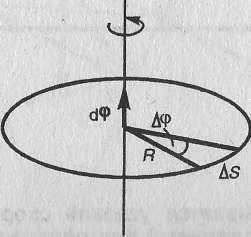
Angular acceleration refers to a vector quantity that is equivalent to the initial time derivative of angular velocity:
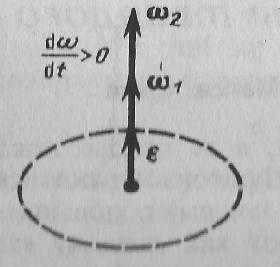

When an object spins around a stationary axis, the angular acceleration vector ε points in the same direction as the vector representing the tiny increase in angular velocity. When the object is accelerating, the vector ε aligns with the vector ω (Fig. 3), while in deceleration, it points in the opposite direction (Fig. 4).
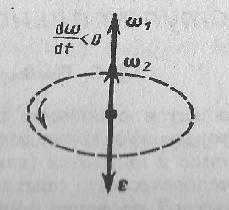
The tangential component of acceleration, denoted as aτ, can be calculated using the formula aτ = dv/dt, where v represents the linear velocity and t represents time. In the case of circular motion, the linear velocity can be expressed as v = ωR, where ω is the angular velocity and R is the radius of the circle. Similarly, the normal component of acceleration, denoted as an, can be calculated using the formula an = ω2R.
Therefore, the relationship between linear and angular quantities can be expressed as follows:
s = Rφ, where s represents the length of the path traveled by a point along the arc of a circle,
v = Rω, where v represents the linear velocity,
aτ = Rω2, where aτ represents the tangential acceleration,
an = ω2R, where an represents the normal acceleration.
In the case of equal-variable motion of a point on a circle (ω=const), these formulas can be used to calculate the various quantities involved.
Constant motion refers to the movement at a consistent speed, where the velocity remains unchanged (v = const) and there is no acceleration or deceleration (a = 0).
Straight-line constant motion is a type of motion in which an object covers the same distance within equal time intervals. For instance, if we divide a time interval into one-second segments, the object will cover the same distance during each of these segments in straight-line constant motion.
The velocity in straight-line constant motion remains constant regardless of time, and it is always directed in the same direction as the displacement of the object. In other words, the displacement vector aligns with the velocity vector in terms of direction. Additionally, the average velocity for any given time interval is equal to the instantaneous velocity:
The speed of constant linear movement – is a physical vector quantity that is equal to the ratio of the displacement of an object for a given time interval to the duration of that interval t:
Therefore, the speed of constant linear movement indicates the amount of displacement a point in space makes in a given unit of time.
Lecture 2. Dynamics of an object.
The relative nature of movement is demonstrated in the fact that the behavior of any moving object can only be determined in relation to another object, which is referred to as a reference object.
Reference frame and coordinate system
The choice of the reference frame is arbitrary. It should be noted that both the moving body and the reference frame are equivalent. In calculations of motion, either one can be considered as the reference body or the moving body, depending on the situation. For instance, consider a person standing on the Earth, observing a car driving down the road. From the person’s perspective, they are stationary relative to the Earth, so they consider the Earth as the reference body, while the car and the airplane are seen as moving bodies. However, the passenger in the car is also correct when they say that the road is moving away from under the wheels. From their perspective, they consider the car as the reference frame (since they are stationary relative to it), while the Earth is seen as the moving body.
To document a change in an object’s position in space, a reference frame must be associated with a coordinate system. A coordinate system serves as a means of specifying the location of an entity in space.
When tackling physical problems, the most commonly used coordinate system is the Cartesian rectangular coordinate system, which consists of three mutually perpendicular rectilinear axes – the abscissa (), the ordinate (), and the applicator (). In the International System of Units (SI), the meter serves as the unit of measurement for length.
For orientation on the ground, the polar coordinate system is employed. Maps are utilized to determine the distance to a desired settlement. The direction of movement is determined by the azimuth, which signifies the angle formed between the zero direction and the line connecting an individual to the desired point. Thus, in the polar coordinate system, the coordinates are represented by the distance and the angle .
When it comes to geography, astronomy, and calculating satellite and spacecraft movements, the location of all objects is established in relation to the Earth’s center using the spherical coordinate system. In order to determine the position of a specific point in space within this system, the distance from the origin is taken into account, as well as the angles that the radius-vector forms with the plane of the prime meridian (longitude) and the plane of the equator (latitude).
Frame of Reference
The frame of reference, along with the associated coordinate system and time measuring device, is used to determine the motion of an object.
When solving problems related to motion, it is essential to specify the reference frame in which the motion is being considered.
When analyzing motion with respect to a moving frame of reference, the classical law of addition of velocities applies: the velocity of an object with respect to a stationary frame of reference is equal to the vector sum of the object’s velocity relative to the moving frame of reference and the velocity of the moving frame relative to the stationary frame of reference:
| Task | An airplane is flying with a speed of 50 m/s relative to the air. The wind is blowing at a speed of 15 m/s relative to the ground. We need to find the velocity of the airplane relative to the ground when it is moving downwind, upwind, and perpendicular to the wind direction. |
| Solution | In this case, the velocity we are looking for is the velocity of the airplane relative to the ground, which is the fixed frame of reference. The relative velocity of the airplane is its velocity relative to the air, which is the moving frame of reference. The velocity of the wind relative to the ground is the velocity of the moving frame of reference relative to the fixed frame of reference. |
Let’s align the axis in the direction of the wind.

Allow us to express the rule of combining velocities in vector form:
When projecting onto the axis, this equation can be restated as:
By substituting the given values into the formula, we can determine the velocity of the airplane with respect to the ground:
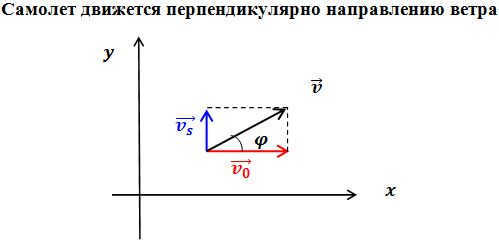
When considering this situation, we utilize a coordinate system and orient the coordinate axes as depicted in the diagram.
We combine the vectors and using the vector addition rule. The velocity of the airplane in relation to the ground:
Since we are discussing measurements of distance and time, and have selected the appropriate units (meters, seconds), we must establish a consensus on what we are comparing these spatial and temporal distances to. The position of an object can only be determined in relation to other bodies. We can discuss the motion of an object, specifically the change in its position, only if we specify the bodies with respect to which this position is defined.
The bodies that are chosen to establish the positions of all other objects are referred to as reference bodies.
An arbitrary object can be selected as the frame of reference, such as three steel rods that are perpendicular to each other (Fig. 1.10 ). Then, on this reference frame, a point known as the origin is chosen as 0, and units of distance measurement (in SI – meters) are determined.
In everyday practice, the Earth serves as the natural frame of reference. However, there are other reference bodies that can be used, such as the Sun or stars. When different reference frames are used, the same objects exhibit different types of motion. An example of this can be seen in the historical debate between Ptolemy and Copernicus. Both of these systems are accurate, but Copernicus’s decision to use the Sun as the frame of reference greatly simplified the description of planetary motion. It is worth noting that during the Middle Ages, it required a significant amount of courage to choose the Sun as the reference frame instead of the Earth, and doing so could even result in punishment by burning at the stake.
Video 1.1. Descartes’ coordinate system
To measure time, we rely on periodic processes found in nature or man-made devices. These processes, or devices that utilize them, are known as clocks. When faced with a problem, it is important to establish a starting point for measuring time. This starting point can be chosen arbitrarily, such as the creation of the world, the founding of Rome, the Nativity of Christ, or the flight of Mohammed from Mecca. However, the arbitrary nature of this choice means that it can be successful, less successful, or entirely unsuccessful. The success of the choice depends on how simple, clear, and transparent the solution to the problem is. Unlike three-dimensional space, time is one-dimensional, so aside from choosing a starting point, we only need to select units of measurement, such as seconds.
When it comes to measuring time, we rely on various cyclic processes that occur in nature or are artificially created. These processes, or the devices that generate them, are commonly referred to as clocks. However, before delving into any problem related to time, it is crucial to establish a starting point for our measurements. This choice is entirely arbitrary and can vary depending on individual preferences or cultural beliefs. Some may opt to measure time from the creation of the world, while others may choose significant events such as the foundation of Rome, the Nativity of Christ, or Mohammed’s flight from Mecca. Regardless of the chosen starting point, the success of our measurement lies in the simplicity, clarity, and transparency of the solution to the problem at hand. Unlike three-dimensional space, time is a one-dimensional concept, which means that besides the starting point, we only need to determine the units of measurement, such as seconds.
A reference system comprising a coordinate system and a clock is known as a frame of reference.
Figure 1.11 illustrates an instance of a reference frame.
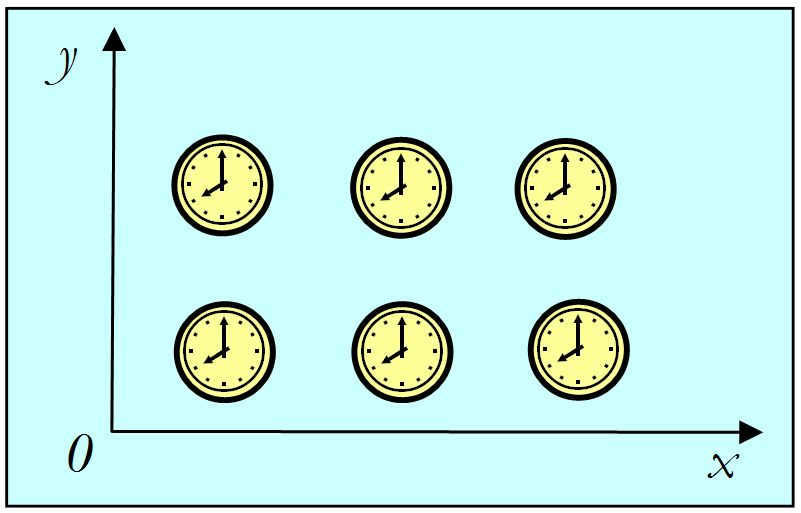
The concept of a reference frame is frequently associated with a coordinate system, which typically avoids any confusion. Nevertheless, it is important to acknowledge that these two concepts are not identical: while sharing the same reference frame, the coordinate system can vary and may be Cartesian, spherical, or any other.
In the field of physics, mechanics has historically been the first and foundational section. Mechanics is concerned with the study of the movement of objects, and the frame of reference plays a crucial role in this area.
Within mechanics, motion refers to the change in the position of objects relative to each other over time. It is therefore impossible to track the trajectory of an object’s motion without a point of reference, or in other words, a coordinate system. Furthermore, a reference frame is necessary to establish and measure the motion. In mechanics, a reference frame consists of a set of coordinate systems attached to a single object or a group of objects, as well as a time reference frame that allows for the consideration of the motion or rest of other bodies.
To grasp the concept of a reference frame and its crucial significance, let’s consider examples on a cosmic scale. It is common knowledge that the Moon orbits the Earth in an almost circular trajectory. Consequently, the movement of this celestial body appears to be relatively straightforward when viewed from the reference frame aligned with our planet. Now, let’s envision the Moon’s motion from the perspective of a coordinate system linked to the Sun.
Inertial systems
Inertial systems are reference frames in which a body, when no forces are acting on it (or when the total force acting on it is zero), either remains at rest or continues to move uniformly in a straight line (known as inertial motion, hence the name). Newton’s first law postulates the existence of such reference frames. These systems are well-suited for describing the motion of bodies in the simplest manner.
The inertial system is merely a theoretical construct, as it cannot be physically realized. Various reference frames are employed to describe different phenomena. Moreover, in certain instances, a reference frame may be deemed inertial, while in others, it may be considered non-inertial. The crux of the matter is that on occasion, the inaccuracies resulting from the non-inertial nature of the system are negligible and can be disregarded.
Both the inertial and non-inertial frames of reference are linked to planet Earth. It’s important to understand that considering Earth as an inertial system is a very simplified assumption in the grand scheme of the cosmos. However, this rough approximation is enough to explain numerous phenomena occurring on the planet’s surface. Specifically, the movement of land transportation and billiard balls, among other things, can be accurately described using this approximation.
The Earth’s rotation affects various aspects of space exploration, such as spacecraft launches. When a rocket is launched vertically from the Earth’s surface, it actually experiences horizontal motion as well. This is because the launch site moves along with the rotating planet. These deviations in trajectory, which are characteristic of non-inertial systems, can be mathematically described using inertial forces. Although these forces are not physically real, they are considered in calculations to account for the reference frame’s inertia. The Coriolis force is one such mathematically defined force that supposedly acts on the rocket and causes it to deviate from a straight path.





